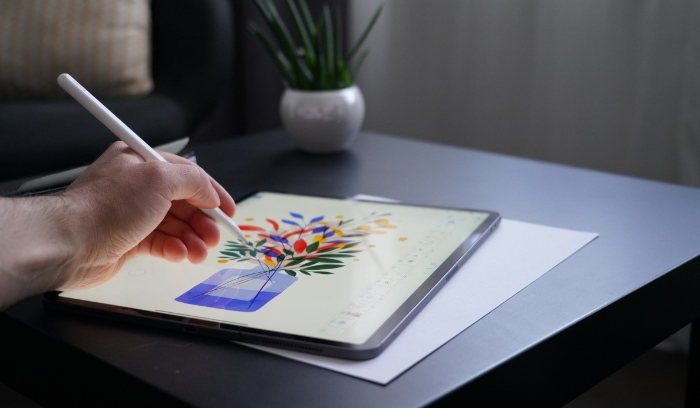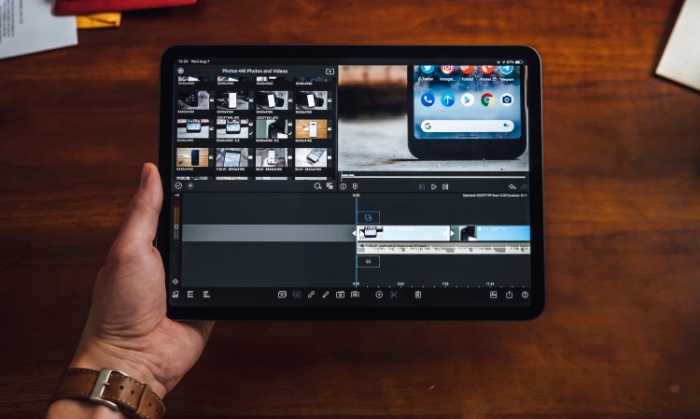iPad vs. Tablet: Breaking Down the Differences

Understanding the nuances of the digital world can often feel like deciphering a secret code. One common source of confusion is distinguishing between an iPad and a tablet. While many people use these terms interchangeably, they represent different categories within the realm of smart devices.
This topic is significant given the prevalence of these devices in our daily lives. Whether for work, education, entertainment, or connecting with others, many of us depend on these handy gadgets.
Consequently, recognizing the differences between iPads and other tablets can play a crucial role in making an informed purchase.
A Brief History of Tablets and iPads
Long before the iPad entered the scene, tablets were already marking their territory in the tech world. The idea of a handheld computing device dates back to the late 20th century.
The first notable attempt was the GRiDPad, introduced in 1989, which was effectively the first commercial tablet computer. However, the device didn’t gain mainstream popularity due to its hefty price and limited capabilities.
The 1990s and early 2000s saw several tech giants, including Microsoft, make numerous attempts to launch a successful tablet device. While these endeavours resulted in innovative technology like touchscreens and mobile operating systems, they failed to appeal to the broader consumer market.
It wasn’t until the late 2000s that the concept of tablets finally began to take hold among the public. The proliferation of smartphones had familiarized consumers with the idea of touch interfaces, paving the way for the rise of tablets.
The Advent of the iPad
Enter Apple. In 2010, the tech giant unveiled the first iPad, revolutionizing the concept of tablets. With its sleek design, intuitive user interface, and a plethora of applications via the Apple App Store, the iPad was an immediate hit.
The iPad leveraged the momentum of the already popular iPhone and offered a larger, more powerful device that bridged the gap between smartphones and laptops. Each subsequent iPad generation introduced new features and refinements, from retina display and improved processors to Apple Pencil support and varying screen sizes.
By creating a user-friendly device that catered to both entertainment and productivity, Apple not only defined the modern tablet with the iPad but also established a new standard for what tablets could be.
Today, the term “iPad” has become so synonymous with tablets that it’s easy to forget it’s a brand-specific product.
What Is a Tablet?
A tablet is a portable computing device featuring a touchscreen interface. It’s compact and lightweight, making it easy to carry around, yet powerful enough to perform a wide range of tasks.
While similar to smartphones, tablets have larger screens that provide a better viewing experience for media consumption, gaming, reading, and other activities. Furthermore, they bridge the gap between smartphones and traditional computers, offering more computing power and a larger screen than a smartphone, but in a more compact and portable form factor than a laptop.
The Wide Spectrum of Tablet Brands and Types
Tablets are not exclusive to any particular brand. Numerous tech companies produce these devices, each with their distinct features and operating systems. Some of the key players in the tablet market, aside from Apple with its iPad, include Samsung, Amazon, Microsoft, and Lenovo.
These brands offer a variety of tablets catering to different customer needs. For instance, Samsung’s Galaxy Tab series operates on Android and is known for its high-end specs and compatibility with a wide range of apps.
Amazon’s Fire tablets, on the other hand, are renowned for their affordability and seamless integration with Amazon’s ecosystem of services. Microsoft’s Surface Pro line stands out for its hybrid functionality, blurring the lines between a tablet and a laptop.
Key Features and Specifications of Tablets
Tablets usually share a core set of features and specifications. They typically include a touchscreen for navigation, a rechargeable battery for portability, and cameras for photos or video calls.
On the software side, most tablets run on mobile operating systems like Google’s Android or Microsoft’s Windows. These operating systems support a wide range of applications, which can be downloaded from their respective app stores.
Furthermore, tablets often come with connectivity features such as Wi-Fi and Bluetooth, and some models also support cellular networks.
Hardware specifications like processor speed, RAM, and storage capacity vary among tablets, often correlating with their price points. Some tablets also support accessories like detachable keyboards or styluses, enhancing their functionality.
What Is an iPad?

An iPad is a specific line of tablets designed and marketed by Apple Inc. It stands as an icon in the tablet industry and has significantly influenced how other tablets are designed and used.
Introduced in 2010, the iPad brought a user-friendly, sleek, and powerful device to the consumer electronics market.
Understanding the iPad Spectrum
Apple has released several different models of the iPad, each catering to different consumer needs. The basic iPad, often considered the standard model, strikes a balance between performance and price.
The iPad Mini offers a smaller, more compact size for increased portability. On the higher end, the iPad Air and iPad Pro models provide more advanced features and higher performance, rivaling many laptops.
Over time, Apple has updated these models to improve their processing power, display quality, and other features, while occasionally introducing new models or retiring older ones.
Distinct Features and Specifications of iPads
iPads operate on Apple’s proprietary operating system, iOS (for earlier models) or iPadOS (for later models). These systems integrate seamlessly with other Apple devices, creating an interconnected ecosystem for users who own multiple Apple products.
iPads are known for their high-resolution Retina displays, powerful processors, robust battery life, and high-quality construction. The user interface is intuitive and easy to navigate, a trait often attributed to Apple’s emphasis on design.
Apple iPads come with the App Store, which hosts a vast array of apps for various purposes, from productivity and education to entertainment and social networking. iPads also offer access to unique Apple services, such as FaceTime for video calls, iCloud for online storage, and Apple Music for streaming.
For enhanced functionality, some iPad models support the Apple Pencil – a stylus that enables drawing and writing on the iPad – and the Smart Keyboard, which turns the iPad into a more laptop-like device.
Major Differences Between an iPad and a Tablet
Armed with the foundational knowledge about tablets and iPads, we can now explore their key differences.
Operating Systems
One of the most noticeable differences between an iPad and other tablets lies in the operating system. iPads run on Apple’s proprietary iOS or iPadOS, which is known for its smooth performance and user-friendly interface.
On the other hand, many tablets run on Android, which is developed by Google and used by several manufacturers, or Windows, used primarily by Microsoft for its Surface tablets. These systems each have their strengths, but they also differ in terms of app availability, customization options, and user interface.
App Ecosystem
The app ecosystem is another area where iPads and other tablets diverge. While both the Apple App Store and Google Play Store (for Android devices) offer millions of apps, there can be differences in app availability, as some developers release their apps exclusively for one platform.
Moreover, Apple is known for its strict app vetting process, ensuring a high standard of quality and security.
Performance and Specifications
iPads generally have robust performance due to their high-quality hardware and the seamless integration between the hardware and iPadOS. Other tablets can also deliver excellent performance, but the specifications vary more widely depending on the manufacturer and model.
Price Points and Affordability
Price is another key differentiator. iPads are generally more expensive compared to many Android or Amazon tablets, reflecting Apple’s positioning as a premium brand.
However, the iPad lineup does offer different price points, from the more affordable iPad and iPad Mini to the pricier iPad Pro.
Hardware Design
iPads are renowned for their sleek design, build quality, and high-resolution Retina displays. Other tablets can also boast high-quality designs and displays, but there’s a broader range in terms of build quality, screen size, and resolution.
Brand-Specific Features and Services
Finally, iPads and other tablets each come with their own set of brand-specific features and services. For instance, iPads have features like FaceTime, Siri, and Apple Pencil support.
Android tablets, on the other hand, are often tightly integrated with Google services like Google Assistant, Google Drive, and Google Photos.
How to Choose Between an iPad and a Tablet?

When it comes to choosing between an iPad and a tablet, your decision will hinge on several factors, each reflecting your individual needs and preferences.
Factors Based on Individual Needs
Purpose of Use
Consider what you intend to use the device for. If you want a tablet mainly for media consumption, casual gaming, and web browsing, an affordable Android tablet might be sufficient.
For more intensive tasks like professional graphic design or video editing, you might lean towards an iPad Pro or a high-end Android tablet like the Samsung Galaxy Tab S series.
Budget
Your budget will significantly influence your choice. If you’re looking for a premium, high-performance device and have the budget for it, an iPad might be your best bet.
On the other hand, if you’re looking for a more budget-friendly option, you might consider an Android or Amazon tablet, which typically offer good value for money.
Ecosystem Integration
If you already use Apple products like the iPhone or Mac, you might appreciate the seamless integration an iPad offers, as you can sync your data and applications across devices easily. Conversely, if you’re heavily invested in the Google ecosystem, an Android tablet would better suit your needs.
App Preferences
Certain apps are exclusive to specific platforms. For example, if you rely heavily on a particular productivity app that’s only available on the App Store, an iPad would be the logical choice.
Strengths and Weaknesses of Each Option
Remember that each type of tablet has its strengths and weaknesses. iPads are known for their smooth performance, high-quality build, and integration with the Apple ecosystem, but they’re generally more expensive.
Android tablets are usually more affordable and customizable, and they come in a wider variety of models, but their performance and build quality can vary.
Finally, be sure to read reviews and do thorough research before making your decision. It’s important to choose a device that not only fits your needs but also offers the best value for your investment.
Conclusion
In this constantly evolving digital era, understanding the differences between an iPad and a tablet is more crucial than ever. While they share many similarities as portable computing devices, it’s the nuances that distinguish them.
From varying operating systems and app ecosystems to diverse pricing tiers and brand-specific features, each offers unique strengths that cater to different user preferences.
The choice between an iPad and another tablet is a personal one, largely influenced by factors such as your budget, intended use, app preferences, and existing ecosystem of devices. It’s about finding the device that best fits your needs, whether that’s the seamless integration of an iPad with other Apple products or the customization and affordability of many Android tablets.
In the end, the tablet you choose becomes more than just a device; it’s a tool that facilitates your digital exploration, productivity, and entertainment. So, invest time in understanding your needs, researching your options, and making an informed decision.
After all, the right tablet or iPad can be a game-changer in your digital journey.


